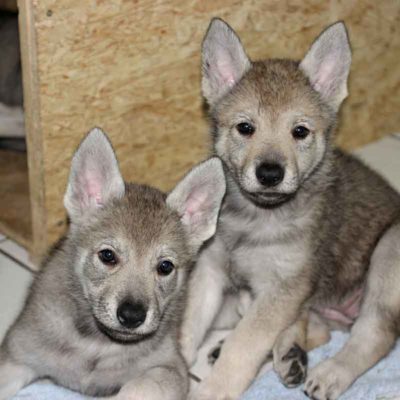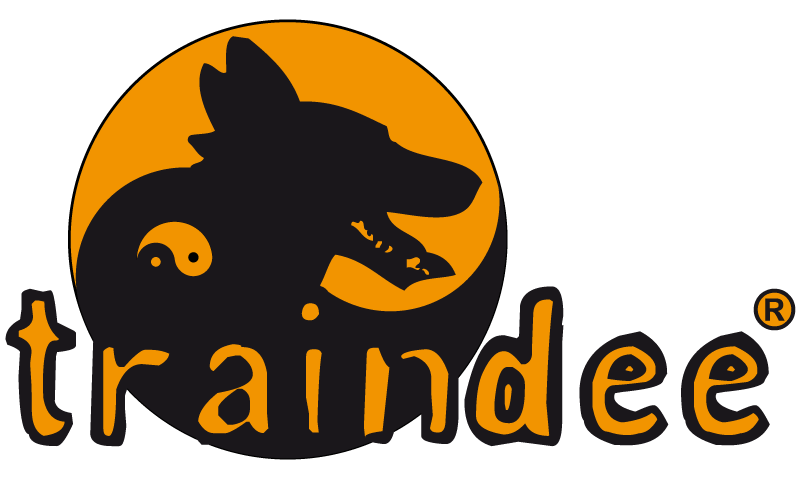The world of wolf dog breeds

Sometimes it is not at all easy to understand that our lovable companions, the domestic dogs, once descended from wolves.
Especially when you look at the cute and cuddly breeds like the Poodle or the Pomeranian. However, if we take a closer look at the wolf dog breeds, we can see similarities between our dogs and their ancestors.
Wolfhounds are becoming increasingly popular as pets thanks to their presence in the media and also social media, however these dogs are certainly not for inexperienced dog owners. Wolfhound breeds are strong and powerful dogs, have very high exercise requirements and also need a lot of grooming.
Let’s take a look at popular wolf dog breeds to learn more about wolf dogs and find out if they are suitable as a pet for you.
What are Wolf Dog breeds?
Wolfdogs are domestic dogs (Canis familiaris) that bear a resemblance to grey wolves (Canis lupus). Wolves and wolfdogs have common ancestors. Wolfdogs still have much of the DNA of the original wolves, although most of the traits of the original wolf have been bred out. Most notably, wolfdog breeds are tamer and have mainly retained their outward appearance.
What is the difference between a wolf and a domestic dog?
Dogs and wolves are often thought to be very different species. While our dogs are seen as loyal companions and “man’s best friend”, wolves are often seen as dangerous and aggressive animals that can never be pets. But in fact, the two mammals are not as different as we might think.
In many ways, our dogs are actually more like wolf cubs. Our companion dogs were bred from wolves, with undesirable wolf-like traits eliminated through selective breeding. The aim was to breed a good-natured and tame pet suitable for living with humans. In our modern times, attempts have been made to reintegrate some of these characteristics of the wolf into our domestic dog. These breeding efforts have resulted in dogs that look like wolves.
There are, of course, some major differences between the original wolves and our domestic dogs. For example, our dogs can give birth all year round, whereas wolves only do so once a year. Also, our modern dogs already have a gene to digest grains and starches, which makes them omnivores compared to wolves.
Of course, it is easy to see how a Maltese dog differs visually from a wolf. However, if you compare a Husky to a wolf, it becomes more difficult. Both breeds have “primitive” characteristics that are also known in wolves. Many wolf-dog breeds are so “successful” that it can be difficult to tell the difference between them and wolves.
Is it advisable to get a wolf dog?
There is no question that wolf dogs can be wonderful companions, but only if they are trained and raised consistently and in a breed-specific manner. These dogs can become a great challenge and effort for laymen and inexperienced dog owners. Understanding their needs requires a great deal of knowledge and experience, as well as time to learn the important issues about this breed. Unfortunately, the increasing popularity of these dogs has also caused the number of wolfhounds in shelters to rise sharply in recent years. Too many people are fascinated by the looks of these animals and are emotionally enticed into buying them without realising what challenges they will face.
Wolfhound breeds are very strong and persistent pets that may not be suitable for handling young children as they may not appreciate their strength and could injure them as a result. However, this does not mean that they cannot be family dogs. They are quite friendly and affectionate and are very comfortable in their family environment.
These wolf dog breeds are a little more complex to care for and live with, but if you find the right place, wolf-like dogs can be the perfect companion.
Some of the most popular wolfhound breeds
Siberian Husky
The Siberian Husky, called Husky for short, is a very popular, well-known and widespread wolfdog breed. Unfortunately, due to these facts, it is often found in animal shelters.
Huskies are very intelligent dogs that also have an enormous amount of energy and don’t get tired very quickly. They are working dogs that can get bored quickly if they are not kept busy and get enough exercise.
The Siberian Husky can quickly display destructive behaviour when bored and underchallenged! It is therefore important that sufficient time is spent with these dogs! In addition to their need for plenty of exercise, Huskies also require a lot of grooming, yet these dogs are extremely affectionate and loyal and make excellent family dogs in the right environment.
German Shepherd-Husky Mix
A breeding between the popular German Shepherd and the Husky was to become the ultimate Wolfhound. However, dog owners should always be one step ahead of these extremely intelligent and quick-learning dogs. This breed is therefore not recommended for beginners and only experienced owners should acquire such a dog.
The Sheepdog-Husky-Mix is very athletic, has a high need for exercise and also needs enough mental exercise.
Native American Indian Dog
The American Indian Dog is considered a historic working dog native to America. It is very athletic and strong and is still used as a working dog today, especially as a search and rescue dog, police and military dog, and therapy and hunting dog.
Unlike many of the other dogs in this article, the Amercian Indian Dog gets along very well with children! It is a great family dog, best suited to an active family that gives it plenty of exercise through walks and dog sports.
However, as a large dog breed, they are prone to elbow dysplasia and hip dysplasia.The joints can become very painful, leading to lameness.
Czechoslovakian Wolfhound
The Czechoslovakian Wolfhound is a very intelligent dog breed that wants to be challenged mentally as well as physically. It is very loyal and affectionate to its owner, but needs an experienced dog owner who understands its special needs.
Originally developed for the Czech military, this breed is now used as search and rescue dogs and also as other working dogs.
The Czechoslovakian Wolfhound has a dense coat that is very high maintenance and he is also known to shed a lot!
Quite a bit of time needs to be set aside for the upbringing, socialisation and training of the Czechoslovakian Wolfhound. It should therefore be ensured that this time can be taken before deciding on such a dog.
Northern Inuit Dog
The Northern Inuit Dog is a cross between a German Shepherd, a Siberian Husky and an Alaskan Malamute.
The breed is considered aloof to strangers, but very friendly and affectionate with their own family and people. They will protect their family but also suffer from separation anxiety when left alone. Proper upbringing, socialisation and training from an early age are very important for this breed.
Utonagan
Like the Northern Inuit Dog and the Tamaskan Dog, the Utonagan dog is a cross between the German Shepherd, Siberian Husky and Malamute. These dogs are characterised by a wonderful temperament, but also place high demands on their owners.
The breed has only been around since the 1980s and was originally bred to pull sledges. Their muscular build gives them strength and speed, they have a high work ethic and lots of energy.
In addition to plenty of exercise, the Utonagan also needs plenty of room to run around. These playful dogs are very suitable for families with children. It is important to remember that these dogs do not like to be left alone and can quickly suffer from separation anxiety.
Saarlos Wolfhound
This dog breed was created by crossing the German Shepherd with the Eurasian Grey Wolf. A Dutch breeder wanted to give the German Shepherd Dog more wolf-like features and thus bred the Saarlos Wolfhund.
DNA tests confirmed that the Saarlos Wolfhound bears more resemblance to a wolf than any other dog breed. For all their similarity to the wolf, these dogs have retained the wonderful temperament of the German Shepherd. This is not a beginner dog, it needs dog owners with experience.
Tamaskan
The Tamaskan dog is also a breed with the primary aim of achieving a visual resemblance to the wolf. It is not a purebred dog bred from a cross between a Husky, a Belgian Malinois and a German Shepherd.
The Tamaskan has been around since the 1980s. In 2006, an official breed club was founded, which strives for responsible breeding of healthy and strong animals.
A home with its own garden is ideal for the wolf-like Tamaskan. It is a very affectionate and loyal dog, but can quickly suffer from separation anxiety if left alone too much.
Kugsha
Little is known about the ancestry of the Kugsha or Amerindian Malamute. Even though the dogs look very similar to Huskies, it is unclear where these mixed breed dogs came from. They are an active breed with a great work ethic and similar drive to many wolfhounds.
An experienced owner is a prerequisite for these very intelligent dogs.





